
The subject of Haridas Muzumdar was brought up to me by Kreg at
Millerwalks.com. I immediately found myself pre-occupied with investingating the relationship between Henry Miller and Muzumdar, a man who went from being Miller's Western Union assistant to being Mahatma Gandhi's spokesman in America.
Besides being an esteemed individual in his efforts to support Gandhi and India's independence movement, as well as the American Civil Rights Movement, Muzumdar also has the misfortune of generally being acknowledged as the unidentified man who mistakingly shits in a bidet in a Paris brothel, as portrayed in
Tropic Of Cancer. I'll try to back this conclusion up.
HARIDAS T. MUZUMDAR -- EARLY CONNECTIONS TO MILLER
Born in India, Muzumdar came to the U.S. in 1920 "to study" [
New York Times, Feb. 26, 1956, p.26 (
1)]. 1920 was also the year Henry joined Western Union and quickly became an Employment Manager. According to Ferguson's
Henry Miller: A Life, Miller employed Muzumdar and liked him enough to make him his assistant.

Haridas Muzumdar makes a pretty obvious appearance in Miller's
Moloch, under the name "Hari Das." As if to confirm the identity, Miller writes about an incident in which Hari is harrassed by street urchins on his second day at Western Union, at which point he pulls out a copy of
An Open Letter To Lloyd George--an essay he actually wrote--and starts reciting it [Muzumdar's
Gandhi Versus The Empire (1932) lists
Open Letter as the first piece written "by the same author.")
According to Miller in
Moloch, Muzumdar had taken the Western Union job two months after his arrival in America:
"He thought of his intended studies at Columbia. They seemed far away, and about as useful as a totem pole. [...] What could he do, in America, with a degree of 'Doctor of Philosophy '?" (p. 11) Muzumdar became a friend of Henry's; he visited his home for dinner and discussions. The "Hari Das" of
Moloch will be featured in some other posting one day.
MUZUMDAR AND GANDHI
Muzumdar began to make a name for himself in 1923, a year before Miller left Western Union.
Gandhi The Apostle (Chicago: Universal, 1923) was, according to Muzumdar,
"the first full-length portrait of the Mahatma to appear in any language of the world" (ref.) [excerpts from a 1923 review in
The Nation]. Miller makes reference to Muzumdar in a letter to Emil Schnellock dated November 5, 1923:
"Write Haridas Thakorrial Muzumdar and request a copy of the New York Call." Photo above: Muzumdar (in middle) laying garlands on the Liberty Bell in Philadelphia on January 26, 1931, to mark the first anniversary of India's Declaration of Independence [pic from Gandhi Versus The Empire].
Photo above: Muzumdar (in middle) laying garlands on the Liberty Bell in Philadelphia on January 26, 1931, to mark the first anniversary of India's Declaration of Independence [pic from Gandhi Versus The Empire].
Muzumdar continued to write from the U.S. about India's "non-violent revolution" throughout the 20's, but finally joined Gandhi in India in 1929. Muzumdar was part of Gandhi's famous Salt March in March-April 1930. During the march, Muzumdar upset Gandhi by eating ice cream when nobody else could. As one would hope, Gandhi didn't hold a grudge, and Muzumdar continued to be his champion in the U.S., writing Gandhi Versus The Empire (1932), Gandhi Triumphant! (1939), and more.
THE BIDET INCIDENT IN TROPIC OF CANCER
In Tropic Of Cancer, Miller tells of his brief and miserable stay with another Hindu from Western Union, N.P. Nanavati, a pearl merchant (called Nanantatee in the novel). Dearborn's Happiest Man Alive incorrectly identifies Nanavanti as Muzumdar (which she also spells incorrectly, an error Ferguson also makes). Anyway, through him, Miller is introduced to an unnamed Indian man described as a "young man" (to Miller's 40-year old self, anyway), to whom he is assigned the task of taking to a brothel. Long story short, as I'm sure you all know, this man shits in the bidet instead of just peeing in it, which is all one should do. A big stink is made, so to speak, and the dignified, refined Indian man is embarrased.
Is this Muzumdar? As narrator, Miller never insinuates that he's met him before. In fact, I'm not even saying that Miller did anything more than base a character on Muzumdar. However, this "young man" is "decked out in a corduroy suit, a beret, a cane, a Windsor tie" and other wise very refined, as is his educated speech. This is comparable to the Hari Das of Moloch and the reality of Muzumdar's education. He's also described as being "one of Gandhi's men, one of that little band who made the historic march to the sea during the salt trouble."
 After they leave the brothel, further evidence is provided as Miller describes: "He talks about the eight vows that he took, the control of the palate, etc. On the march to Dandi even a plate of ice cream it was forbidden to take." Yes, even the ice cream is mentioned. He goes on to tell how the Young Man has newspaper men to see and lectures to give, as was Muzumdar's role. Also: "He has been to America." Finally, on page 94, Miller calls the Young Man a "saint:" at the start of the chapter, he references two Hindu "saints" he knew at Western Union, but only names one (Gupte). I think Muzumdar is the other.
After they leave the brothel, further evidence is provided as Miller describes: "He talks about the eight vows that he took, the control of the palate, etc. On the march to Dandi even a plate of ice cream it was forbidden to take." Yes, even the ice cream is mentioned. He goes on to tell how the Young Man has newspaper men to see and lectures to give, as was Muzumdar's role. Also: "He has been to America." Finally, on page 94, Miller calls the Young Man a "saint:" at the start of the chapter, he references two Hindu "saints" he knew at Western Union, but only names one (Gupte). I think Muzumdar is the other.
Okay, one more: this bidet thing happened around August 1930, during the couple of weeks he was staying with Nanavati. On p. 90 of Cancer, Miller begins his introduction of the Young Man by saying "The young man had just come from India [...] The money he was spending was a gift from the merchants of Bombay; they were sending him to England to spread the gospel of Gandhi." In 1952, Muzumdar's preface to Mahatma Gandhi: Peaceful Revolutionary states "When all is said and done, my greatest debt is to the Saint of Sabarmati, my association with whom at the Satyagraha Ashram, on the Dandi March, and in London, I count among the greatest privileges in life" (thus placing him in England at that time). And in an article in the New York Times, dated August 29, 1930, Muzumdar is said to have "left India on July 11" (and was in New York by Aug. 29). These facts establish the possibility that Haridas was in Paris in late-July/early August 1930, the period in which Henry was with Nanavati.
MUZUMDAR LATER IN LIFE
1930s: Lectures in support of Marcus Garvey, at UNIA meetings;
1931: Prominent New York lecturer on the subject of Gandhi and India:
1947: Becomes a U.S. citizen;
Early 1950's: Professor of Sociology at Cornel College, Mt. Vernon, Iowa;
1956: Runs for US Congress as a Republican;
1982: Greatness of Gandhi: An American Estimate, edited by Muzumdar. After this, I lose track. I've located no obituary. Perhaps he's still alive?
 When Michael Fraenkel died in 1957, he left a wife named Daphne. She would probably have been a minor footnote in the Miller life story--known simply as Michael Fraenkel's wife--but she made herself more pronounced later on, when her inherited rights to the Miller-Fraenkel correspondence Hamlet would cause Henry much frustration.
When Michael Fraenkel died in 1957, he left a wife named Daphne. She would probably have been a minor footnote in the Miller life story--known simply as Michael Fraenkel's wife--but she made herself more pronounced later on, when her inherited rights to the Miller-Fraenkel correspondence Hamlet would cause Henry much frustration. "Daphne was born in Paris on April 8th 1900. Had flaming red hair and always wore purple. She had been married a couple of times. Taught school in Indiana. Witnessed World War I up close and personal, and said it was much worse than the second one [...] Daphne published and printed books for poets and playwrights. Carrefour Publications was what is called a vanity press [...] She typeset the books on a special typewriter. Then printed each sheet on a small printing press [...] Books were stacked in every square foot of her small apartment. Somehow I found room under the printing press for my sleeping bag."
"Daphne was born in Paris on April 8th 1900. Had flaming red hair and always wore purple. She had been married a couple of times. Taught school in Indiana. Witnessed World War I up close and personal, and said it was much worse than the second one [...] Daphne published and printed books for poets and playwrights. Carrefour Publications was what is called a vanity press [...] She typeset the books on a special typewriter. Then printed each sheet on a small printing press [...] Books were stacked in every square foot of her small apartment. Somehow I found room under the printing press for my sleeping bag." On April 9, 2006, be prepared to see Henry Miller portrayed in the television adaptation of
On April 9, 2006, be prepared to see Henry Miller portrayed in the television adaptation of 








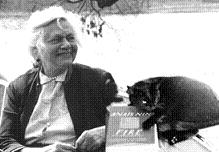
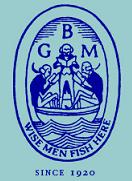
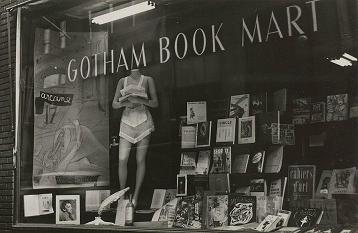 Miller found himself back in New York in 1940. Steloff offered him much personal support: not only did she allow him to use Gotham Book Mart as his mailing address, she also sent books by his request to his long-unseen daughter Barbara; she also got him work by hooking him up with people who were offering a dollar a page for pornography (allowing him to make some easy cash and write the much-revised basis for Quiet Days In Clichy).
Miller found himself back in New York in 1940. Steloff offered him much personal support: not only did she allow him to use Gotham Book Mart as his mailing address, she also sent books by his request to his long-unseen daughter Barbara; she also got him work by hooking him up with people who were offering a dollar a page for pornography (allowing him to make some easy cash and write the much-revised basis for Quiet Days In Clichy).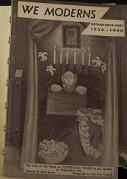



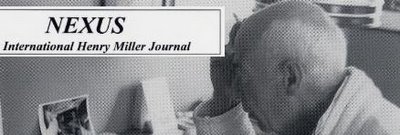 Nexus: The International Henry Miller Journal
Nexus: The International Henry Miller Journal


